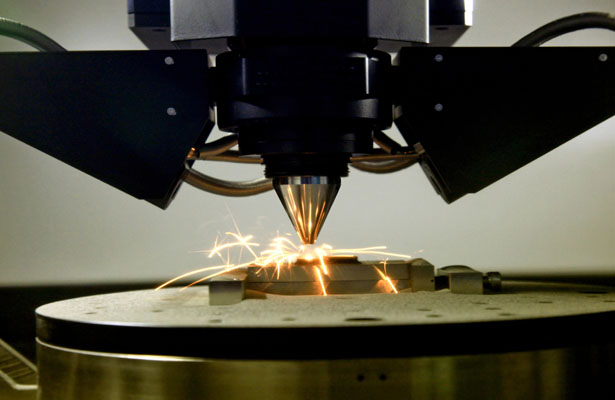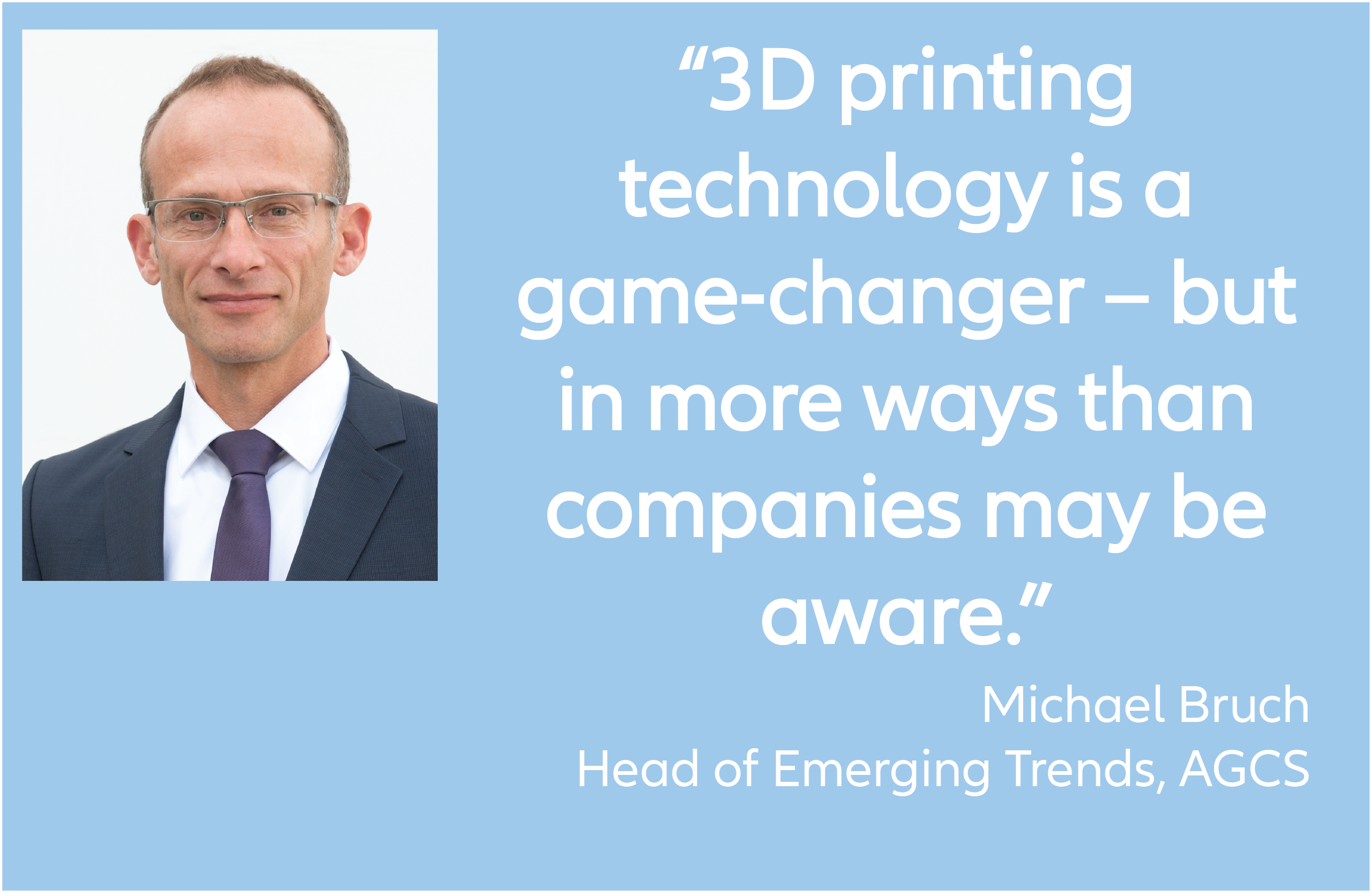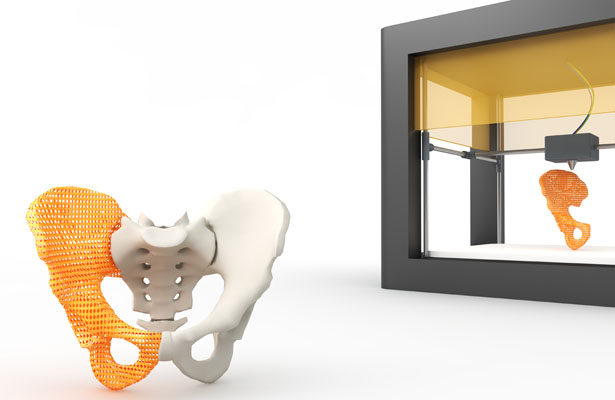3D printing works by spraying thin layers, micrometer by micrometer, of a material such as paper, plastic, nylon, stainless steel or titanium to eventually build a finished product.

3D printing works by spraying thin layers, micrometer by micrometer, of a material such as paper, plastic, nylon, stainless steel or titanium to eventually build a finished product.
During the opening of a small bridge in the southeastern town of Gemert in November, Dutch officials celebrated in one of the most Dutch ways possible – they proudly rode their bicycles across it. And they had a reason to be proud. Although small and unremarkable in appearance, the structure is impressive because of its material – it’s the world’s first bridge to be made entirely from 3D-printed concrete.
Three dimensional printing is being used to make an ever increasing number of objects in our everyday lives. These include everything from aircraft components to dental crowns, jewelry, children’s toys, solid-state batteries, customized mobile phone, shoes, buildings and even food – and the technology is still developing.
The impact is so large that former U.S. Vice President Al Gore has said 3D printing could be of similar importance to Henry Ford's invention of the assembly line. Michael Bruch, Head of Emerging Trends, and Juergen Weichert, Head of Global Product Development Liability, both at Allianz Global Corporate & Specialty (AGCS), agree that the technology is a game-changer – but in more ways than companies may be aware.
“3D printing is an innovative method of production. It clearly distinguishes itself from the past in terms of both the technology used and the processes,” explains Bruch. “What it has done is widen the circle of contributors involved in producing final products, but this also means that the circle of liability has also widened – and I don’t think this is well-recognized.”
The two AGCS experts recently produced a paper on the hidden liabilities of 3D printing, which was published as part of the book "3D Printing: Law, Economics and Technology of Industrial 3D Printing."
Architects, designers and engineers may also want to be sure that CAD production is covered by their insurance policies, where issues of intellectual property rights and cyber cover may also come into play. If designs are being publicly shared, companies should establish what level of protection they have against manipulation of their designs.

Known also as “additive” manufacturing, 3D printing is distinct from traditional “subtractive” manufacturing where an object is produced by cutting, drilling and lathing extra material away. It works by spraying thin layers, micrometer by micrometer, of a material such as paper, plastic, nylon, stainless steel or titanium to eventually build a finished product.
3D printing uses as little as 10 percent of the raw material of the traditional subtractive process, while still allowing the easy customization of each item. Instead of requiring large product runs to recover costs, 3D printing allows manufacturers to create items individually or in small batches without costly retooling. In addition, 3D printing can create items that are otherwise near impossible to construct, allowing for new, more complex and efficient designs.
The entire process is controlled by software that takes a series of digital slices from a computer-aided design (CAD) model. With just a few clicks of a mouse, the whole process can be set into motion. This model acts as the blueprint containing all specifications for the final product.
It is here, Weichert says, that future liabilities may lurk. If a building, toy or aircraft made by or including components made by 3D printing proves faulty, has to be recalled or results in injury or even death, the issue of liability could become more complex.
In the past, manufacturers and suppliers were responsible for the goods they produced and sold. Additive manufacturing, however, may see responsibility broaden to include product designers and internet platforms, as well as printer and software manufacturers.
“The question is if the original blueprint can itself be considered a product such as defined, for example, under the German Product Safety Act,” says Weichert. “If so, then additive manufacturing could see liability in such cases extend to include the designer of the blueprint.”

3D printing is used to make everything from aircraft components to dental crowns, jewelry, children’s toys, solid-state batteries, customized mobile phone, shoes, buildings and even food – and the technology is still developing.
Bruch explains why operators of an internet platform could also be liable. Typically, a 3D model is available for purchase from a website. The nature of this is a business transaction, so the operators of the web platform are required by law to warn about unsafe products produced using that 3D model.
“Platforms that make such models available to consumers in the European Union are fully liable as manufacturers,” says Bruch. “They are required to inform potential users of any defects that have been recorded when using the model, and failure to do so could potentially open them up to liability.”
As 3D printers drop in price and become more sophisticated, more people are using them at home to print products themselves. This is blurring the lines between end users and manufacturers, leaving the issue of liability far from resolved should something go wrong with a printed product.
Like the blueprints, the use of software in the additive process could expose software manufacturers to liabilities. In Switzerland, for example, the software in 3D printers used to make healthcare products are themselves considered products.
“Companies involved in additive manufacturing should check if they have insurance coverage for product liability and product recalls,” says Weichert. “Although 3D printing is a relatively new method of production, it is still subject to all standards and laws relating to the relevant liability.”
Architects, designers and engineers may also want to be sure that CAD production is covered by their insurance policies, where issues of intellectual property rights and cyber cover may also come into play. If designs are being publicly shared, companies should establish what level of protection they have against manipulation of their designs.
The 3D printing market was estimated to have worldwide revenues of $13.2 billion at the end of 2016. Global Industry Analysts has estimated that, by the end of 2022, the market will be worth $16.8 billion and that companies will be planning to build entire cars, buildings and even aircraft using the technology. Bioprinting also holds promise that it may one day produce complex organs, such as hearts and livers, from scratch.
Another rapid development in manufacturing is 4D printing, where time becomes one of the parameters. As conditions such as humidity or temperature affect the product, the object can reshape itself in response.
According to Michael Bruch and Juergen Weichert, it is already apparent that 3D printing is revolutionizing manufacturing. However, companies involved will want to ensure that they are adequately protected with suitable medical and engineering insurance.
Allianz Global Corporate & Specialty (AGCS) is the Allianz Group's dedicated carrier for corporate and specialty insurance business. AGCS provides insurance cover and risk consultancy across the whole spectrum of specialty, alternative risk transfer and corporate business: Marine, Aviation (incl. Space), Energy, Engineering, Entertainment, Financial Lines (incl. D&O), Liability, Mid-Corporate and Property insurance (incl. International Insurance Programs).
Worldwide, AGCS operates in 32 countries with own units and in over 160 countries and territories through the Allianz Group network and partners. In 2016, it employed more than 5,000 people and provided insurance solutions to more than half of the Fortune Global 500 companies, writing a total of €7.6 billion gross premium worldwide annually.
AGCS SE is rated AA by Standard & Poor’s and A+ by A.M. Best.
.
As with all content published on this site, these statements are subject to our Forward Looking Statement disclaimer: